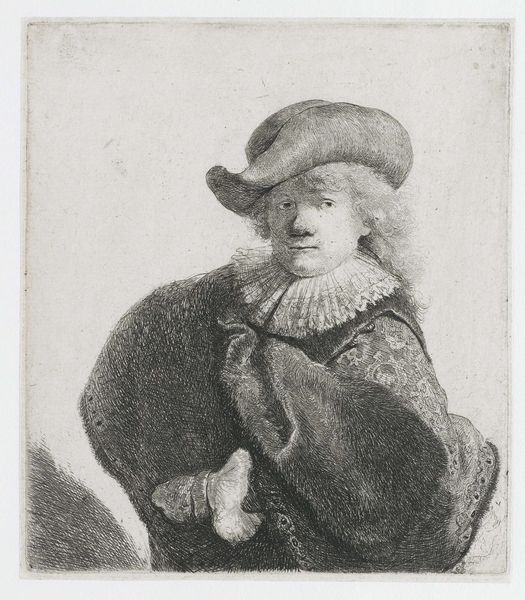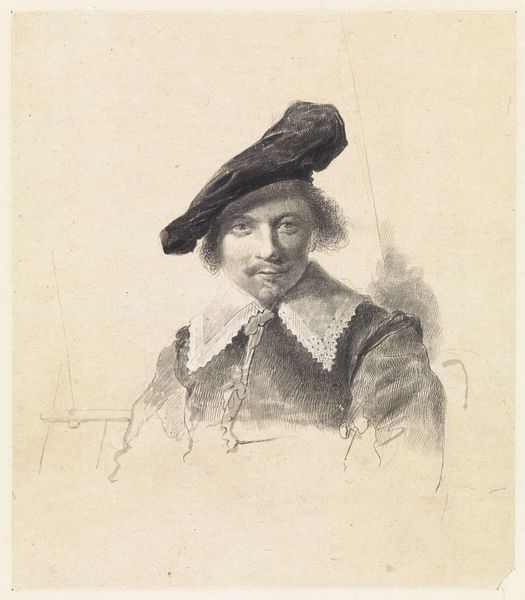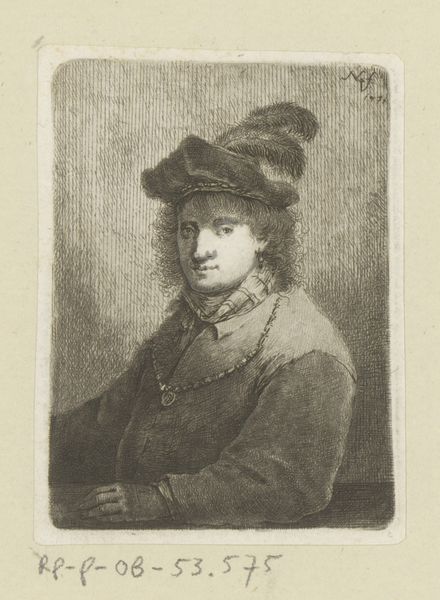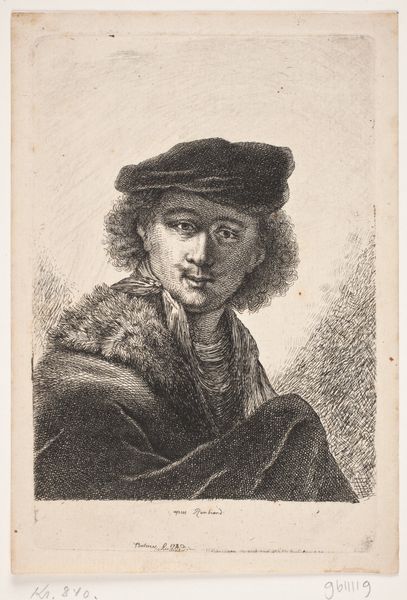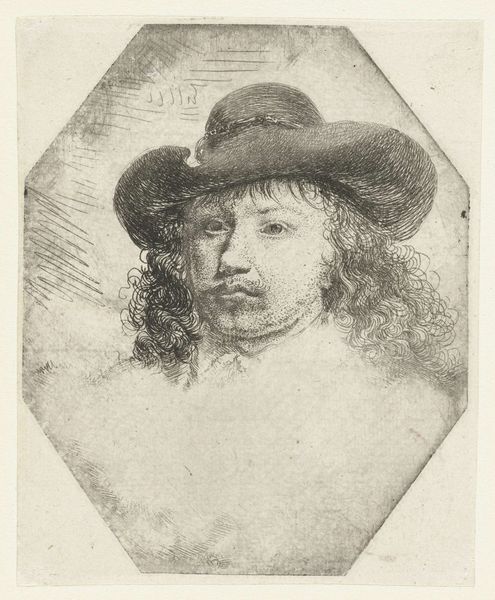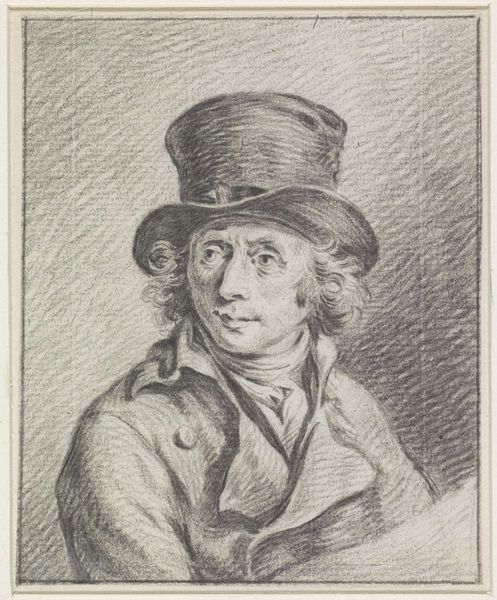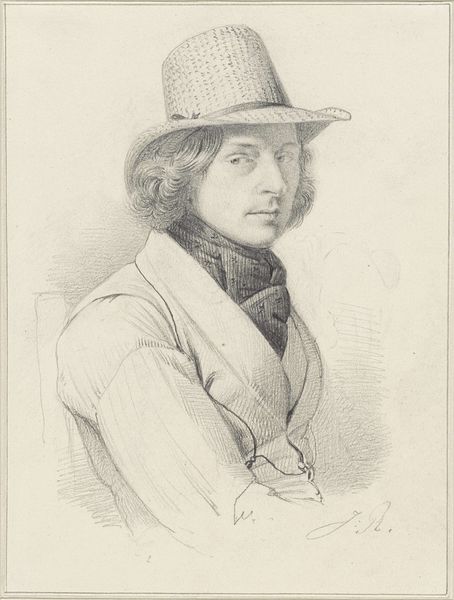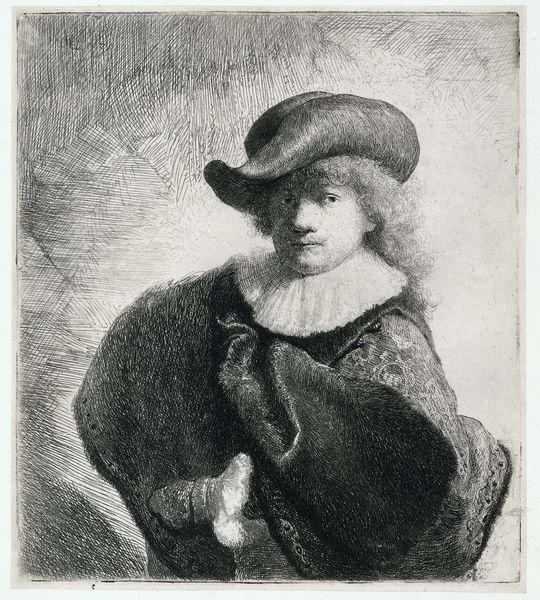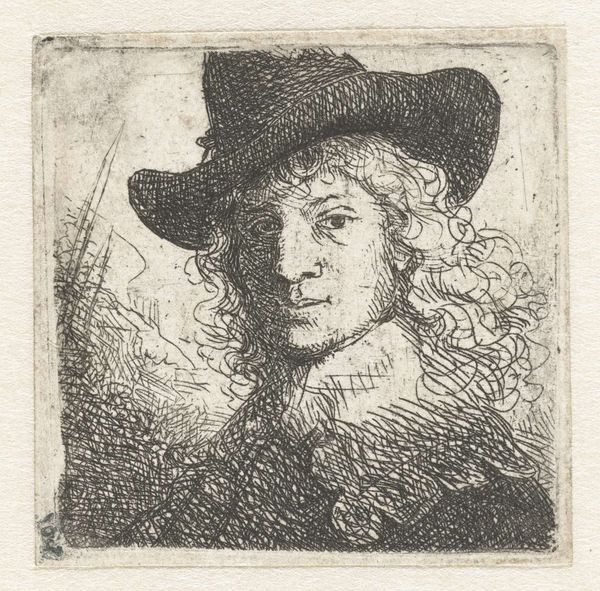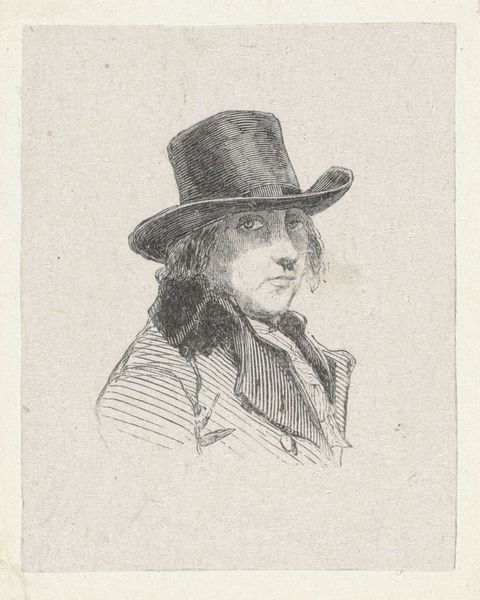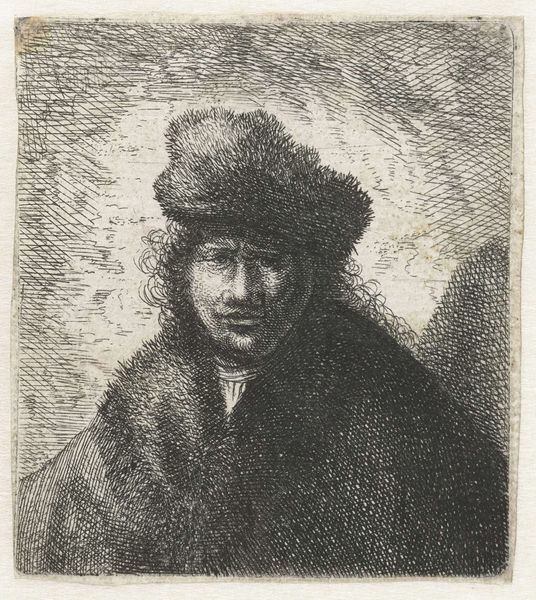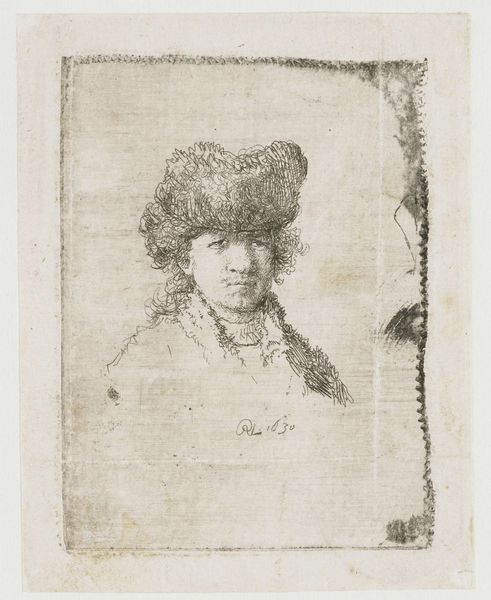
print, etching
#
portrait
#
baroque
#
dutch-golden-age
# print
#
etching
#
history-painting
Dimensions: height 150 mm, width 110 mm
Copyright: Rijks Museum: Open Domain
Curator: Standing here before "Portrait of a Man with a High Hat," created by Ferdinand Bol, sometime between 1643 and 1657, allows us a glimpse into the world of Dutch Golden Age portraiture. This work, currently residing here at the Rijksmuseum, offers an intimate look at the sitter. Editor: It strikes me first as incredibly intimate. Despite being an etching, there's something immediate and raw about the expression on the man's face. The light and shadow give him such a thoughtful, almost melancholy, air. Curator: Well, Bol, though influenced by Rembrandt, definitely possessed his own distinctive style. Think about the function of printmaking at the time; etching allowed for the wider dissemination of imagery and concepts, bringing art to the emerging middle class. The relative accessibility of printmaking facilitated a wider distribution network than singular painted pieces would ever allow. Editor: That’s fascinating. So this etching wasn't just an aesthetic object, it's a material commodity within a broader social framework? I mean, how does the availability of these kinds of portraits affect social perceptions, identity, or status, for both sitter and artist? Curator: Precisely! It shaped how individuals, particularly those aspiring to higher social strata, wanted to be seen. The details of the man’s clothing—the wide collar, the stylish hat—speak volumes about social standing, maybe not aristocracy, but someone who values refinement. Bol himself becomes a recognizable brand as people can come to know the details that signify "a Bol." Editor: And the production? I mean, thinking about the act of creating this, you know, etching isn't a singular creative moment like painting, but a reproduction process... a potentially laborious process, even if on a small scale, and how this differs from, say, royal portraiture done by hand in oils. There's a fascinating intersection of artistry and industrial processes here. Curator: That's an astute observation. It brings in the considerations of artistic labour, print production costs, distribution routes, and the democratization of image making that painting couldn’t quite provide in that time. Editor: It really pushes us to consider not only the final object but its role within its era—to reflect upon class, representation, and materiality all at once. I have to say, reflecting on it in that sense, I understand this man’s thoughtful gaze more. Curator: Exactly! This work embodies history, commerce, craft and artistry beautifully intertwined. It encourages a really engaging way of viewing history through the lens of process.
Comments
No comments
Be the first to comment and join the conversation on the ultimate creative platform.
